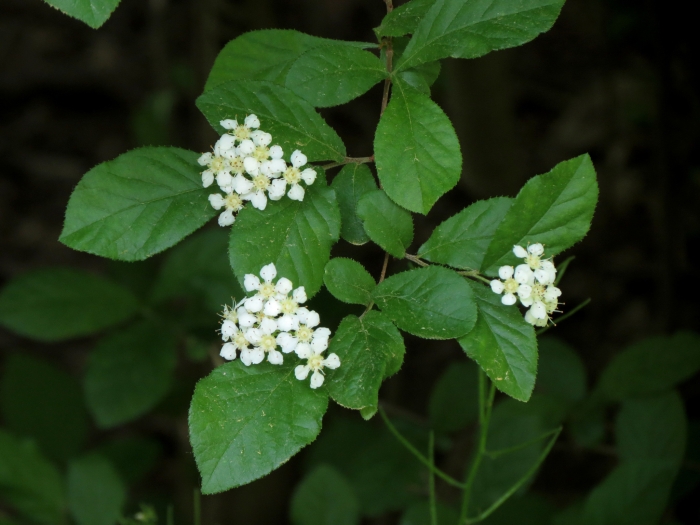Oriental Photinia
(Pourthiaea villosa)
Oriental Photinia (Pourthiaea villosa)
/
/

Katja Schulz
CC BY 4.0
Image By:
Katja Schulz
Recorded By:
Copyright:
CC BY 4.0
Copyright Notice:
Photo by: Katja Schulz | License Type: CC BY 4.0 | License URL: http://creativecommons.org/licenses/by/4.0/ | Rights Holder: Katja Schulz | Publisher: iNaturalist | Date Created: 2018-05-12T16:13:04-07:00 |
















































Estimated Native Range
Summary
Pourthiaea villosa, commonly known as Oriental Photinia, is a deciduous shrub or small tree native to thickets, forest edges, and open woodlands in East Asia, particularly in China, Japan, and Korea. It typically grows to a height and width of 10-15 feet (3-4.6 meters), featuring a rounded form with dense, spreading branches. The leaves are oval, finely toothed, and may turn reddish-purple in the fall, adding seasonal interest. In spring, clusters of small, white, and somewhat showy flowers bloom, followed by red to black berry-like pomes that are attractive to birds.
Oriental Photinia is appreciated for its multi-season interest, including its spring flowers, fall foliage color, and persistent winter fruits. It is used in cultivation for hedges, screens, or as a specimen plant in residential landscapes. It adapts to a range of soil types, provided they are well-drained, and it can tolerate both full sun and part shade conditions. While generally easy to maintain, it can be susceptible to fire blight and leaf spot diseases. Gardeners should be cautious about its potential invasiveness, as it can spread into natural areas outside its native range.CC BY-SA 4.0
Oriental Photinia is appreciated for its multi-season interest, including its spring flowers, fall foliage color, and persistent winter fruits. It is used in cultivation for hedges, screens, or as a specimen plant in residential landscapes. It adapts to a range of soil types, provided they are well-drained, and it can tolerate both full sun and part shade conditions. While generally easy to maintain, it can be susceptible to fire blight and leaf spot diseases. Gardeners should be cautious about its potential invasiveness, as it can spread into natural areas outside its native range.CC BY-SA 4.0
Plant Description
- Plant Type: Tree, Shrub
- Height: 10-15 feet
- Width: 10-15 feet
- Growth Rate: Moderate
- Flower Color: White
- Flowering Season: Spring
- Leaf Retention: Deciduous
Growth Requirements
- Sun: Full Sun, Part Shade
- Water: Medium
- Drainage: Slow, Medium, Fast
Common Uses
Bird Garden, Drought Tolerant
Natural Habitat
Thickets, forest edges, and open woodlands in East Asia
Other Names
Common Names: Warzen-Glanzmispel, Glansmispel, Ji Ding Zi
Scientific Names: , Photinia villosa f. maximowicziana, Photinia villosa, Pourthiaea villosa, Pourthiaea villosa var. laevis, Pourthiaea villosa var. zollingeri, Photinia villosa var. sinica, Pourthiaea villosa var. brunnea, Photinia villosa var. laevis, Photinia villosa var. villosa
GBIF Accepted Name: Pourthiaea villosa (Thunb.) Decne.